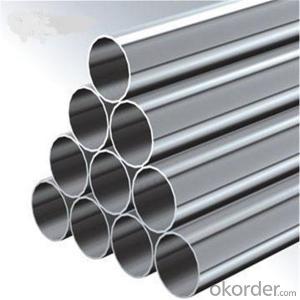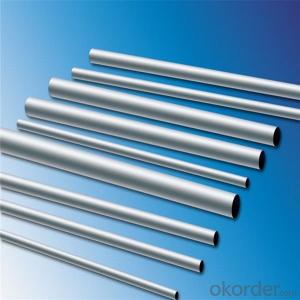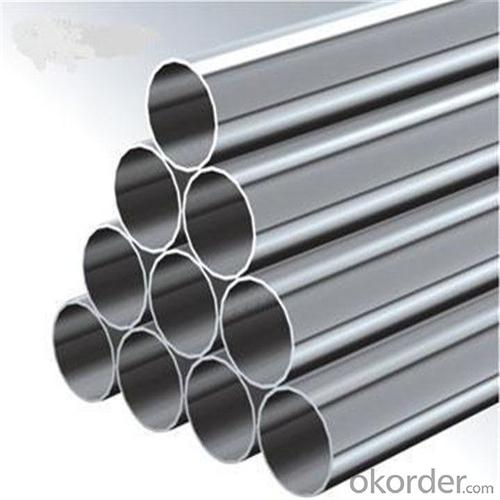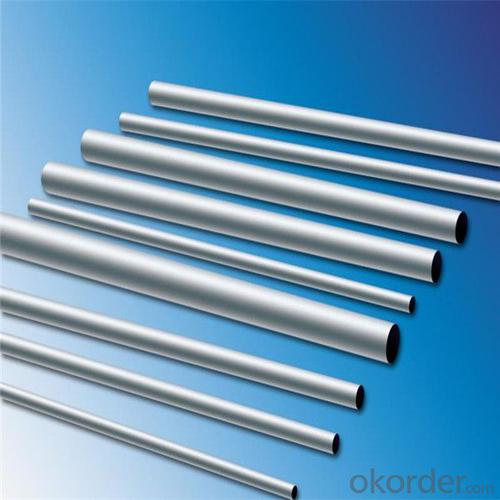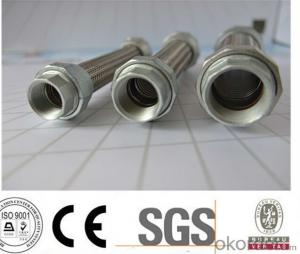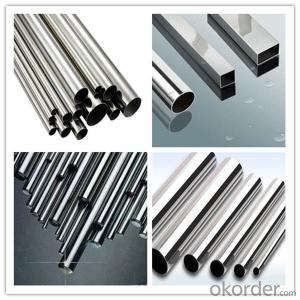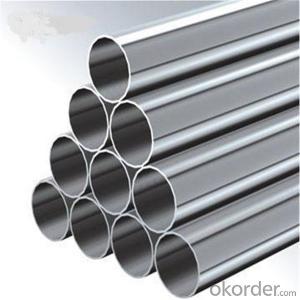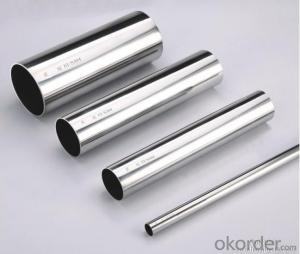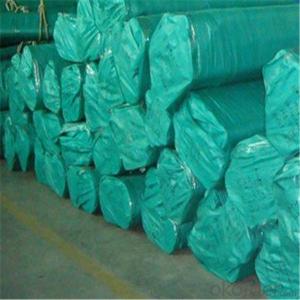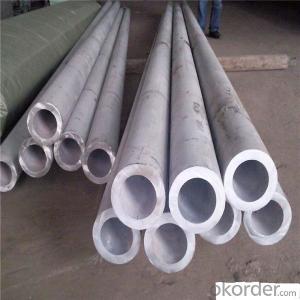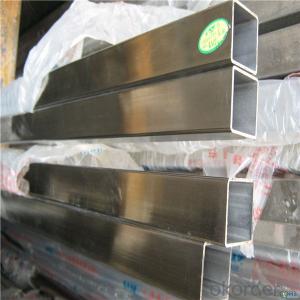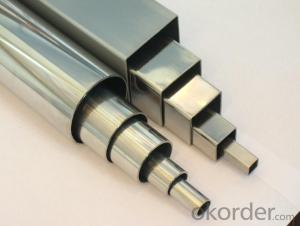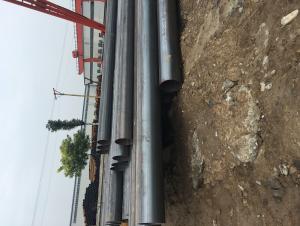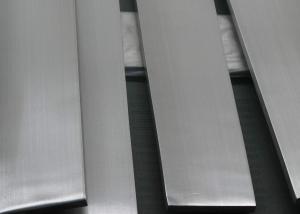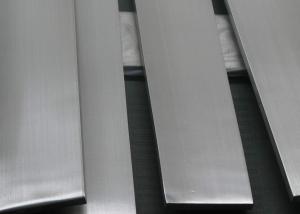316l Stainless Steel Seamless Pipe in Wuxi ,China
- Loading Port:
- Shanghai
- Payment Terms:
- TT OR LC
- Min Order Qty:
- 2 m.t.
- Supply Capability:
- 25000 m.t./month
OKorder Service Pledge
OKorder Financial Service
You Might Also Like
Specification
316 stainless steel pipe
Product Description
Name | Stainless Steel Seamless & Welded Tube &Pipe | |||||
Items | Square tubes, round tubes, oval pipes, special shaped pipes, empaistic pipes, fittings | |||||
Standard | ASTM A554, A249, A269 and A270 | |||||
Material Grade | 201: Ni 0.8%~1% | |||||
202: Ni 3.5%~4.5% | ||||||
304: Ni 8%, Cr 18% | ||||||
316: Ni 10%, Cr 18% | ||||||
316L: Ni10%~14% | ||||||
430: Cr16%~18% | ||||||
Outer Diameter | 9.53mm--159mm | |||||
Thickness | 0.3mm - 3.0mm | |||||
Length | 6m or as customers' request | |||||
Tolerance | a) Outer Diameter: +/- 0.2mm | |||||
b) Thickness: +/- 0.02mm | ||||||
c) Length: +/- 5mm | ||||||
Surface | 180G, 240G, 320G Satin / Hairline 400G, 600G Mirror finish | |||||
Application | handrail,railing, staircase, weldmesh screen,door,window, balcony,fence,bench,furniture,etc | |||||
Test | Squash test, extended test, water pressure test, crystal rot test, heat treatment, NDT | |||||
Chemical Composition of Material | Material
Composition | 201 | 202 | 304 | 316L | 430 |
C | ≤0.15 | ≤0.15 | ≤0.08 | ≤0.035 | ≤0.12 | |
Si | ≤1.00 | ≤1.00 | ≤1.00 | ≤1.00 | ≤1.00 | |
Mn | 5.5-7.5 | 7.5-10 | ≤2.00 | ≤2.00 | ≤1.00 | |
P | ≤0.06 | ≤0.06 | ≤0.045 | ≤0.045 | ≤0.040 | |
S | ≤0.03 | ≤0.03 | ≤0.030 | ≤0.030 | ≤0.030 | |
Cr | 13-15 | 14-17 | 18-20 | 16-18 | 16-18 | |
Ni | 0.7-1.1 | 3.5-4.5 | 8-10.5 | 10-14 | ||
Mo | 2.0-3.0 | |||||
Mechanical Property | Material Item | 201 | 202 | 304 | 316 | |
Tensile Strength | ≥535 | ≥520 | ≥520 | ≥520 | ||
Yield Strength | ≥245 | ≥205 | ≥205 | ≥205 | ||
Extension | ≥30% | ≥30% | ≥35% | ≥35% | ||
Hardness (HV) | <105 | <100 | <90 | <90 | ||
Definition of stainless steel(Adopted form Wikipedia)
In metallurgy, stainless steel, also known as inox steel or inox from French "inoxydable",
is defined as a steelalloy with a minimum of 10.5% to 11% chromium content by mass.
Stainless steel does not readily corrode, rust or stain with water as ordinary steel does,
but despite the name it is not fully stain-proof, most notably under low oxygen, high salinity,
or poor circulation environments. It is also called corrosion-resistant steel or CRES
when the alloy type and grade are not detailed, particularly in the aviation industry.
There are different grades and surface finishes of stainless steel to suit the environment
the alloy must endure. Stainless steel is used where both the properties of steel
and resistance to corrosion are required.
Surface Finish :
Surface finish | Characteristics and application |
No.2B | The surface brightness and flatness of no2B is better than no2D. then through a special surface treatment to improve its mechanical properties, No2B could nearly satisfy comprehensive uses. |
No.3 | Polished with abrasive belt of git#100-#200, have better brightness with discontinuous coarse stria, used as inner and external ornaments for building, electrical appliances and kitchen utensils etc. |
No.4 | Polished with abrasive belt of grit #150-#180,have better brightness with discontinuous coarse stria, but thinner than No3, are used as bathtub buildings inner and external ornaments electrical appliances kitchen utensils and food processing equipment etc. |
HL | Polished with abrasive belt of grit #150-#320 on the NO.4 finish and has continuous streaks, mainly used as buildings ornaments elevators, door of building, frontal plate etc. |
BA | Cold rolled, bright annealed and skin-passed, the product have excellent brightness and good reflexivity like mirror, kitchen apparatus, ornament etc. |
8K | The product have excellent brightness and prefer reflexivity can to be the mirror. |
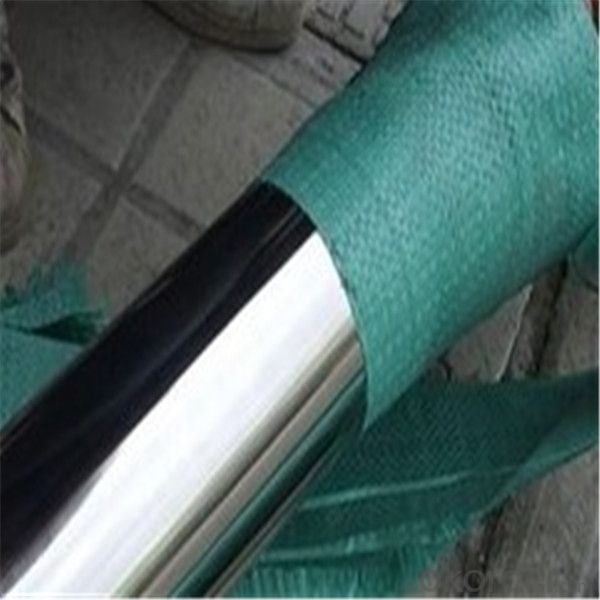
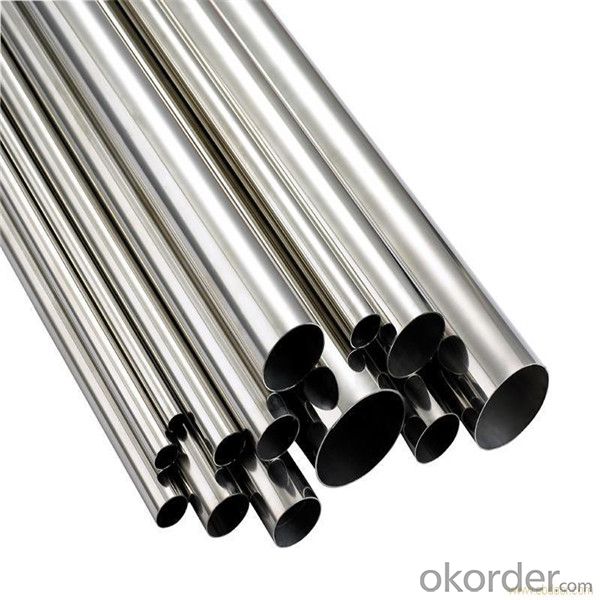
- Q: Are stainless steel pipes suitable for desalination plants?
- Yes, desalination plants can use stainless steel pipes. Desalination plants are facilities that are designed to remove salt and other impurities from seawater or brackish water in order to produce freshwater. In order to withstand the harsh conditions of the desalination process, which includes high pressure, high temperatures, and exposure to corrosive substances, these plants require pipes that are able to endure these conditions. Stainless steel pipes are a great choice for desalination plants because they possess inherent corrosion resistance properties. Stainless steel contains at least 10.5% chromium, which creates a thin protective oxide layer on the material's surface. This oxide layer acts as a barrier, preventing corrosion and ensuring the pipes have a long lifespan. It protects the steel from the corrosive effects of seawater, brine, and other chemicals that are used during the desalination process. Additionally, stainless steel pipes are highly durable and can withstand extreme temperatures and pressures without compromising their structural integrity. They are also resistant to scaling and fouling, which are common issues in desalination plants due to the high concentration of minerals and salts in the water. Moreover, stainless steel pipes are hygienic and easy to clean, making them a suitable choice for desalination plants that require regular maintenance and cleaning to ensure efficient and reliable operation. In conclusion, stainless steel pipes are an ideal choice for desalination plants due to their corrosion resistance, durability, and ease of maintenance. They are capable of handling the demanding conditions of the desalination process, ultimately ensuring the production of high-quality freshwater.
- Q: Stainless steel pipe chamfering how to process?
- The use of fast machine chamfering is the trend of mechanical industry. The utility model overcomes the defects of the processing of the existing machinery and the electric tool, and has the advantages of convenience, quick and accuracy, and is the best choice for chamfering the metal object at present. According to the chamfer, it needs to be divided into straight line, chamfer and curve chamfer.
- Q: Can stainless steel pipes be used for drinking water systems?
- Yes, stainless steel pipes can be used for drinking water systems. Stainless steel is a safe and hygienic material that is resistant to corrosion, rust, and scaling. It does not release harmful substances into the water and is approved by regulatory bodies for use in drinking water applications.
- Q: Stainless steel works. What saw can be sawed off?
- Hand hacksaw can, but a bit slow. It's faster with a toothed saw and a grinder.
- Q: How do you clean and maintain stainless steel pipes?
- Here are the steps you can follow to clean and maintain stainless steel pipes: 1. Begin by wiping the surface of the pipes using a soft cloth or sponge to eliminate loose dirt or dust. This will prevent any scratching during the cleaning process. 2. Mix warm water with a mild detergent or dish soap to create a cleaning solution. Avoid using abrasive cleaners or products that contain chlorine, bleach, or ammonia, as they can harm the stainless steel. 3. Dip a soft cloth or sponge into the cleaning solution and gently scrub the pipes, following the grain of the stainless steel. This will help eliminate any stains or grime. 4. For tougher stains or grease buildup, you can utilize a non-abrasive cleaner specifically designed for stainless steel. Apply the cleaner to the affected area and gently scrub with a soft cloth or sponge. 5. Thoroughly rinse the pipes with clean water to remove any soap residue. 6. Completely dry the pipes using a soft cloth or towel. This will prevent the formation of water spots or streaks. 7. To maintain the shine and luster of stainless steel pipes, you can apply a stainless steel polish or create a homemade solution using vinegar and olive oil. Apply a small amount to a soft cloth and buff the pipes in circular motions. 8. In areas with high humidity or exposure to harsh chemicals, it may be necessary to clean and maintain the stainless steel pipes more frequently. Regular cleaning will help prevent corrosion and preserve their appearance. Always refer to the manufacturer's guidelines for specific cleaning instructions, as different stainless steel finishes may require varying care methods.
- Q: Are stainless steel pipes suitable for wastewater treatment ponds?
- Yes, stainless steel pipes are suitable for wastewater treatment ponds. Stainless steel is highly resistant to corrosion, making it an excellent choice for handling wastewater, which can be highly corrosive. The durability and strength of stainless steel pipes allow them to withstand the harsh conditions and chemicals found in wastewater treatment ponds. Additionally, stainless steel pipes are easy to clean and maintain, ensuring efficient and effective wastewater treatment processes. Overall, stainless steel pipes are a reliable and long-lasting option for wastewater treatment ponds.
- Q: Why is stainless steel magnetic?
- There are kinds of stainless steel at room temperature, the organizational structure can be divided into several categories: 1. austenitic: such as 304, 321, 316, 310; 2. martensite or ferrite, such as 430, 420, 410; austenitic is non-magnetic or weak magnetic properties, martensite or ferrite is magnetic. Usually used as a decorative stainless steel pipe,Most of the stainless steel plate is Austenitic 304 stainless steel material, is generally non-magnetic or weakly magnetic, but fluctuations in chemical composition caused by smelting or processing of different magnetic properties may also appear, but this can not be considered to be counterfeit or substandard, what is the reason? The above mentioned austenite is non-magnetic or weakly magnetic, and martensite or ferrite is magnetic, due to melting segregation or improper heat treatment, will cause a small amount of martensite Austenitic 304 stainless steel body or ferrite.
- Q: Can stainless steel pipes be used for sewage pumping stations?
- Yes, stainless steel pipes can be used for sewage pumping stations. Stainless steel is known for its corrosion-resistant properties, making it an ideal material for applications involving sewage and wastewater. Stainless steel pipes are durable, strong, and can withstand the harsh conditions and corrosive elements found in sewage systems. Additionally, stainless steel is hygienic and easy to clean, which is essential for maintaining the cleanliness and functionality of a sewage pumping station. Therefore, stainless steel pipes are a reliable and long-lasting choice for sewage pumping stations.
- Q: Can stainless steel pipes be used for food storage facilities?
- Yes, stainless steel pipes can be used for food storage facilities. Stainless steel is highly resistant to corrosion, easy to clean, and non-reactive with food, making it a suitable material for ensuring food safety and hygiene in storage facilities.
- Q: What are the advantages of using stainless steel pipes in the automotive industry?
- Stainless steel pipes offer numerous benefits when utilized in the automotive industry. Firstly, their exceptional resistance to corrosion ensures long-lasting durability. This is especially crucial in vehicles exposed to diverse environmental conditions, such as rain, snow, and road salt. By incorporating stainless steel pipes, manufacturers can guarantee that the exhaust system and other components remain in optimal condition for an extended period. Secondly, stainless steel pipes exhibit remarkable resistance to high temperatures. They can endure the extreme heat generated by the engine and exhaust system without corroding or deforming. Consequently, they are suitable for various vehicle parts, including exhaust manifolds, catalytic converters, and mufflers. Moreover, stainless steel pipes possess superior strength and impact resistance. They can withstand intense vibrations and shocks experienced during vehicle operation. This is vital for preserving the structural integrity of the vehicle and preventing potential failures or leaks. Additionally, stainless steel pipes offer excellent formability, enabling easy shaping and fabrication into complex designs. This versatility makes them suitable for various automotive applications, such as fuel lines, coolant systems, and hydraulic systems. Their malleability also reduces the requirement for additional components, resulting in cost savings during the manufacturing process. Furthermore, stainless steel pipes enhance the aesthetic appeal of vehicles. They provide a sleek and polished appearance that elevates the overall design. This is particularly significant for luxury vehicles and sports cars, where visual appeal plays a substantial role in attracting customers. Lastly, stainless steel pipes are environmentally friendly. They possess high scrap value and can be recycled without compromising quality. This promotes sustainability and reduces the demand for new raw materials, making them an eco-friendly choice for the automotive industry. In conclusion, the utilization of stainless steel pipes in the automotive industry offers advantages such as corrosion resistance, high-temperature resistance, strength and impact resistance, formability, aesthetic appeal, and environmental sustainability. These benefits establish stainless steel pipes as the preferred choice for various applications, contributing to the overall reliability and performance of vehicles.
Send your message to us
316l Stainless Steel Seamless Pipe in Wuxi ,China
- Loading Port:
- Shanghai
- Payment Terms:
- TT OR LC
- Min Order Qty:
- 2 m.t.
- Supply Capability:
- 25000 m.t./month
OKorder Service Pledge
OKorder Financial Service
Similar products
Hot products
Hot Searches
Related keywords
